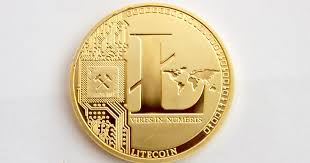
When discussing cryptocurrencies, Bitcoin (BTC) often takes center stage. However, nestled closely behind is Litecoin (LTC), often dubbed “the silver to Bitcoin’s gold.” Created in 2011 by former Google engineer Charlie Lee, Litecoin was designed to improve upon Bitcoin’s model, offering faster transaction speeds and a more efficient mining process. For traders and investors looking for alternatives to the more saturated BTC market, Litecoin presents a compelling option. This article provides a detailed exploration of Litecoin—its technology, trading potential, and future outlook.
What is Litecoin?
Litecoin is a peer-to-peer cryptocurrency that enables instant, near-zero cost payments to anyone in the world. It is an open-source, decentralized network, meaning no central authority governs it. Technically, Litecoin is a fork of Bitcoin’s codebase but with a few significant modifications to optimize speed and usability.
Key Highlights:
- Ticker Symbol: LTC
- Launched: October 2011
- Maximum Supply: 84 million LTC
- Consensus Algorithm: Proof of Work (PoW), using the Scrypt algorithm
How Litecoin Differs from Bitcoin
While Litecoin shares many fundamental similarities with Bitcoin, there are key differences that make it unique:
1. Block Generation Time
Bitcoin takes about 10 minutes to generate a block, whereas Litecoin reduces this time to just 2.5 minutes. This allows for faster transaction confirmations, which is especially advantageous for merchants and traders.
2. Supply Cap
Litecoin has a maximum supply of 84 million coins—four times that of Bitcoin. This higher supply aims to make Litecoin more accessible and practical for smaller transactions.
3. Mining Algorithm
Instead of SHA-256 (used by Bitcoin), Litecoin uses the Scrypt algorithm. Scrypt is more memory-intensive and was initially designed to make mining more accessible to everyday users. However, ASICs have since been developed for Scrypt as well, leading to more competitive mining.
Why Traders Are Turning to Litecoin
Litecoin’s speed and liquidity make it a favorite among day traders and swing traders alike. Here’s why:
1. Lower Fees
Due to its faster block time and optimized network, Litecoin transactions often come with lower fees compared to Bitcoin or Ethereum, especially during periods of high network congestion.
2. High Liquidity
LTC is listed on virtually every major crypto exchange. Its widespread adoption ensures high trading volume and tight spreads—key factors for active traders.
3. Price Volatility
While volatility can be a double-edged sword, it’s essential for short-term traders. Litecoin tends to follow the broader crypto market trend, offering strong opportunities for profit in both bull and bear markets.
4. Active Development & Community
Litecoin has an active development team and a strong community, contributing to frequent updates and upgrades. The implementation of technologies like SegWit (Segregated Witness) and MimbleWimble for privacy-focused transactions highlight Litecoin’s commitment to staying relevant.
Trading Litecoin: Tips for Beginners
If you’re considering adding LTC to your trading portfolio, keep these tips in mind:
1. Understand Market Cycles
Like other cryptos, Litecoin goes through cycles of accumulation, uptrend, distribution, and downtrend. Learn to identify these phases using technical analysis tools like RSI, MACD, and Fibonacci retracements.
2. Use a Secure and Reputable Exchange
Choose a trading platform that offers strong security, low fees, and advanced charting tools. Examples include Binance, Coinbase, Kraken, and Bybit.
3. Risk Management
Always use stop-loss orders to minimize potential losses. Never invest more than you can afford to lose, and consider diversifying your crypto portfolio.
4. Stay Informed
Litecoin is influenced by both crypto-specific news and broader economic factors. Monitor news platforms, follow Litecoin’s official social channels, and stay up-to-date with on-chain analytics.
The Future of Litecoin
Although Litecoin is not the most hyped cryptocurrency, its longevity and technical reliability ensure it continues to be a staple in the digital asset ecosystem. Upcoming upgrades focusing on scalability and privacy could further strengthen its appeal, particularly among users and merchants seeking fast, low-cost transactions.
In the long run, Litecoin’s success will depend on how well it adapts to the rapidly evolving crypto landscape. However, with over a decade of development and a strong track record, LTC remains one of the most resilient digital assets available today.
Conclusion
Litecoin offers a unique blend of speed, security, and affordability, making it an attractive option for traders and long-term investors alike. Whether you’re just getting started with crypto or looking to diversify your trading strategies, Litecoin is certainly worth a closer look. As always, conduct thorough research and use sound trading principles before making any financial commitments.